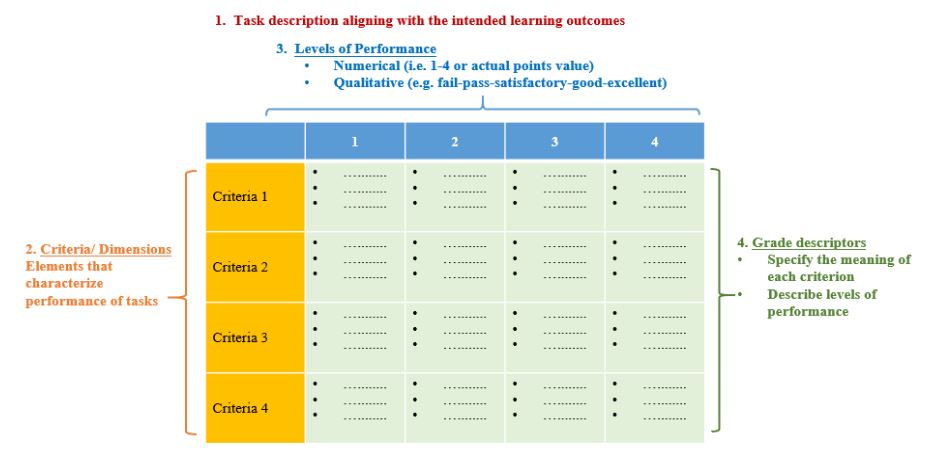What is a Rubric
Video acknowledgement: Rubrics for Assessment, Teachings in Education, https://youtu.be/b4shMaSel00 (Video length: 3:04 mins)
There are various types of rubrics, but a rubric typically consists of four basic elements:
i. Task description
The task description generally describes the assignment / coursework designed to assess the performance of students in achieving the subject intended learning outcome.
ii. Criteria / dimensions assessed (rows)
The rows in a rubric list the criteria or aspects of quality used to evaluate students’ performance in the task. These criteria basically indicate the skills, performance or knowledge required to be demonstrated by students. Scores/ grades and feedback will be given according to students’ performance on these criteria. It is advisable not overcomplicate a rubric by limiting to 4-5 criteria.
iii. Level of performance / mastery (columns)
The columns in a rubric list the levels of performance for each criterion important for students to be able to achieve the intended learning outcomes. Grading labels (short descriptions) will usually be used adopted to describe the level of performance. Assessors shall refer to the grading labels as listed in Institutional Level Subject Grading Descriptors (as set out in the Handbook on Academic Regulations and Procedures, Section B1, 7.1) to ensure consistency with PolyU’s grading system. Points may also be assigned next to each grading label to indicate the score obtainable for performing at that level.
iv. Grade descriptors (cells)
The cells in a rubric provide the descriptions and key features of work for different levels of performance of each criterion. The descriptions shall be clear enough for readers to differentiate the difference in quality between the different levels of performance.
 |
| Figure: Example on the composition of a typical rubric |



